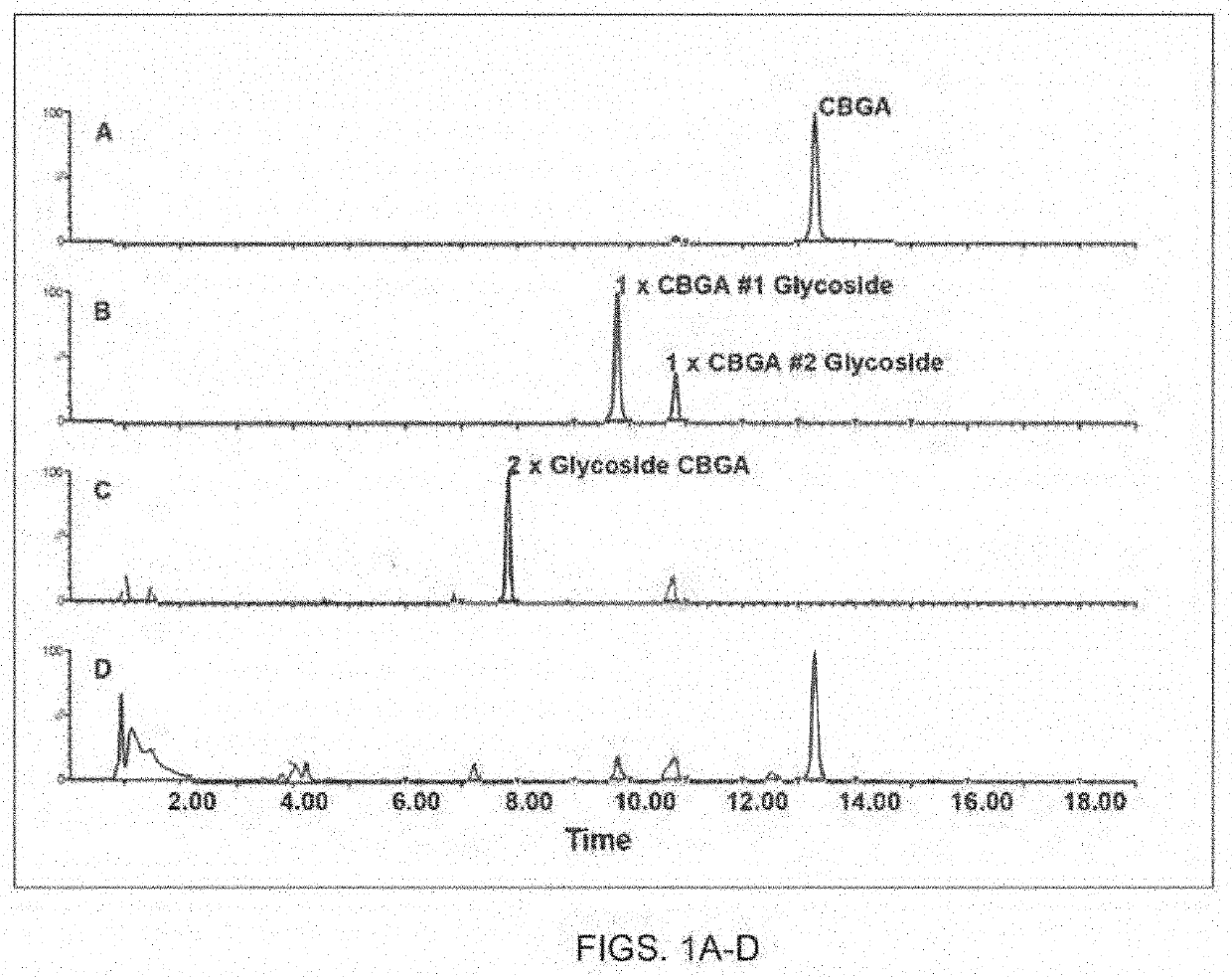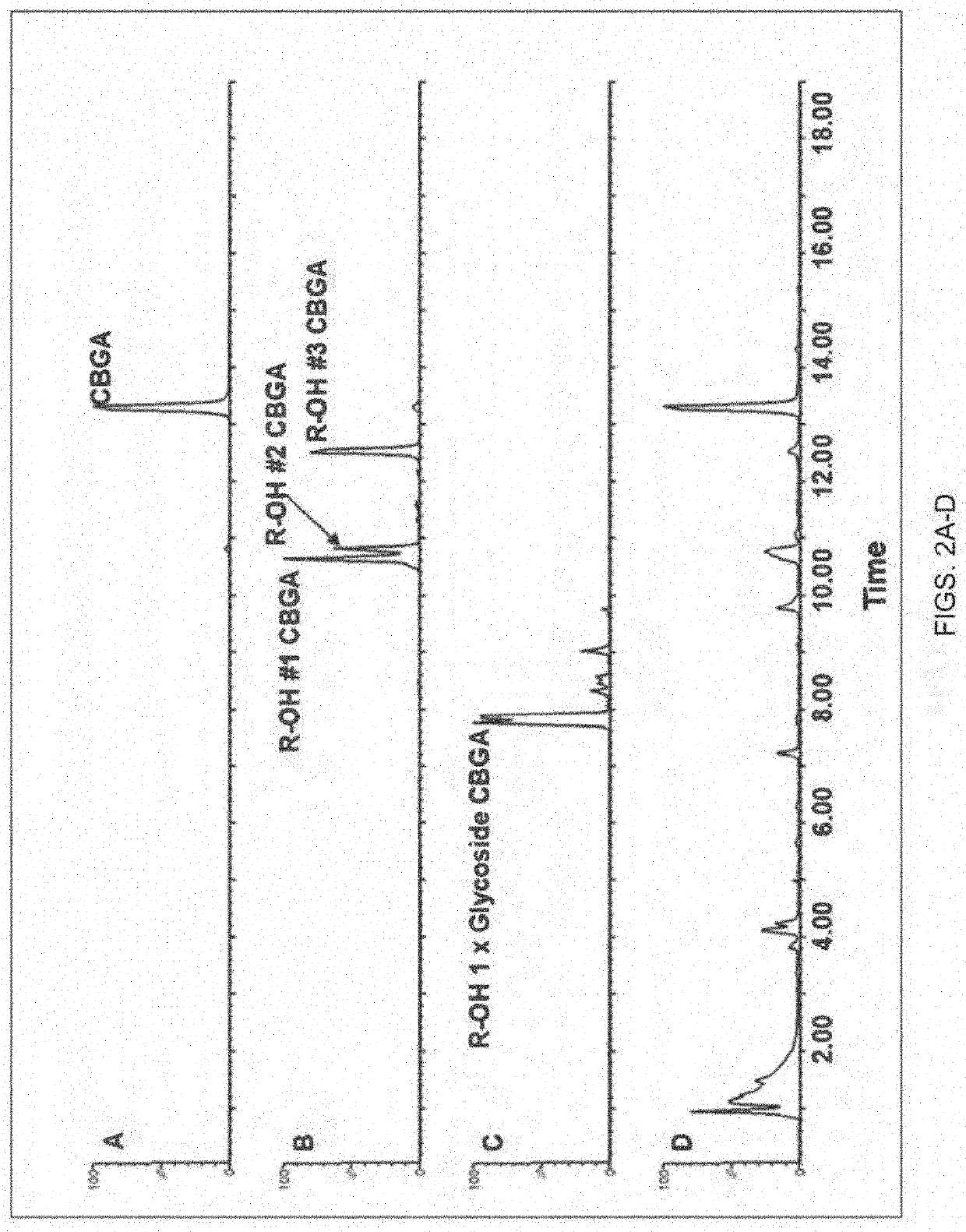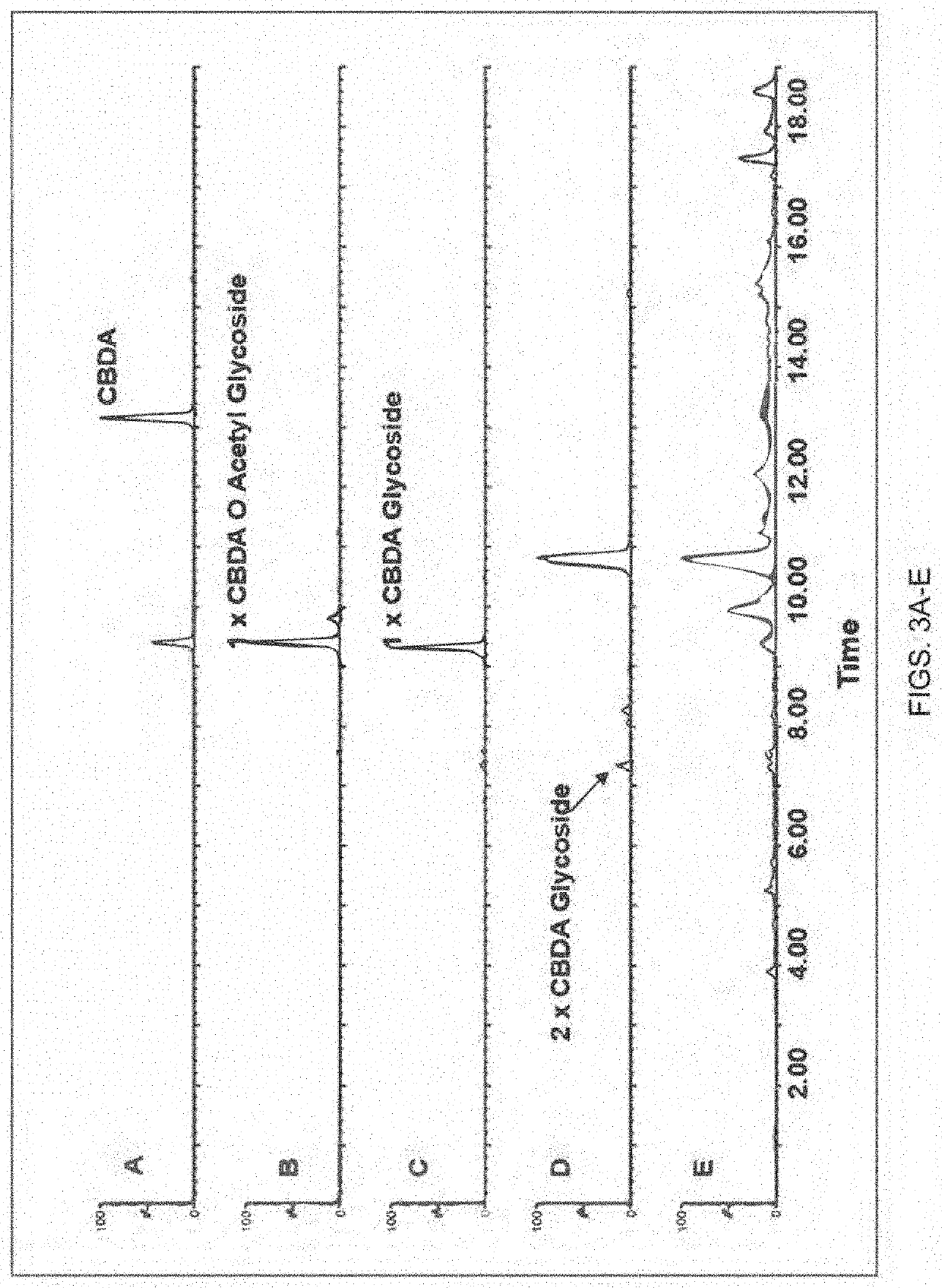Compositions And Methods For Glycosylating Cannabinoid Compounds
a cannabinoid compound and glycosylation technology, applied in the field of glycosylating cannabinoid compounds, can solve the problems of limited traditional methods, limited usefulness, unreliable and varied concentrations of extracted thc,
- Summary
- Abstract
- Description
- Claims
- Application Information
AI Technical Summary
Benefits of technology
Problems solved by technology
Method used
Image
Examples
example 2
expression Enhances In Vivo Hydroxylation and Glycosylation of Cannabinoids in Plant Systems
[0335]The present inventors have demonstrated that overexpression enhanced in vivo hydroxylation and glycosylation of CBDA in an exemplary plant system. Specifically, as generally shown in FIG. 6, the present inventors demonstrate that infiltration of tobacco leaves with Agrobacterium carrying CYP3A4 and P450 oxidoreductase was accomplished as described in herein. Confirmation of expression was done using RT-PCR 2-3 days after infiltration (FIG. 6).
[0336]As generally shown in FIG. 7, the present inventors demonstrate that overexpression of the CYP3A4+P450 oxidoreductase construct and subsequent feeding of at least one cannabinoid, in this case CBDA, upon confirmation of expression resulted in in vivo glycosylation of CBDA in tobacco leaves (FIG. 7). On average, glycosylation increased 3-fold in transgenic N. benthamiana plants compared to the control while hydroxylation increased up to 13-fol...
example 3
ation of Modified Water-Soluble Cannabinoids by Mass Spectrometry
[0337]The present inventors demonstrated the biosynthesis of modified functionalized as well as water-soluble cannabinoids in both in vitro as well as in vivo plant system. Specifically, the present inventors identified the cannabinoid biotransformations associated with the gene constructs in both in vitro assays and transient leaf expression. Through the use of accurate mass spectrometry measurements, the present inventors were able to identify and confirm the biosynthesis of modified water-soluble cannabinoids.
[0338]Specifically, as generally shown in FIGS. 1-4, the present inventors were able to identify the glycosylated water-soluble cannabinoids in the chromatographic analysis and were able to produce extracted ion chromatograms for peak integration. For example, FIG. 1 panel B, illustrates the identification of multiple constitutional cannabinoid isomers of a single glycoside moiety, while in FIG. 2 panel B, an e...
example 6
uble Cannabinoid Production Systems Utilizing MTB Transcription Factor and / or Catalase
[0346]The present inventors have developed a plurality of systems for the biosynthesis and modification of cannabinoids based on cellular location using novel methods of protein targeting. As shown in Table 10, the present inventors designed such novel systems and methods to enhance production and modification (glycosylation, acetylation and functionalization) of cannabinoids as well as to mitigate toxicity resulting from cannabinoid accumulation. Certain embodiments, included the expression of a MYB transcription factor and a catalase (FIG. 27) to degrade hydrogen peroxide resulting from CBDA synthase activity. In one preferred embodiment, the present inventors used Arabidopsis thaliana or an E. coli catalase gene and a predicted Cannabis MYB transcription factor involved in elevating genes involved in cannabinoid biosynthesis. DNA and protein sequences for Cannabis predicted MYB transcription fac...
PUM
| Property | Measurement | Unit |
|---|---|---|
| Solubility (mass) | aaaaa | aaaaa |
Abstract
Description
Claims
Application Information
 Login to View More
Login to View More - R&D
- Intellectual Property
- Life Sciences
- Materials
- Tech Scout
- Unparalleled Data Quality
- Higher Quality Content
- 60% Fewer Hallucinations
Browse by: Latest US Patents, China's latest patents, Technical Efficacy Thesaurus, Application Domain, Technology Topic, Popular Technical Reports.
© 2025 PatSnap. All rights reserved.Legal|Privacy policy|Modern Slavery Act Transparency Statement|Sitemap|About US| Contact US: help@patsnap.com



